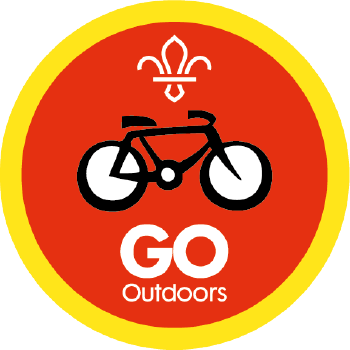
Learn how to repair a bike puncture
You’ll need
- Bicycle
- Puncture repair kit
- Tyre levers
- Spanner (if needed for wheel nuts)
- Bike pump
- Spare inner tube
- Chalk or crayon
- Sandpaper
- Tyre pressure gauge
Before you begin
- Use the safety checklist to help you plan and risk assess your activity. Additional help to carry out your risk assessment, including examples can be found here. Don’t forget to make sure all young people and adults involved in the activity know how to take part safely.
- Make sure you’ll have enough adult helpers. You may need some parents and carers to help if you’re short on helpers.
Planning this activity
- Ask everyone to bring their bikes and repair kits to the next meeting (if they have them).
- If anyone doesn't have a bike, ask parents/carers to bring in any old ones they have or that other siblings may have. Alternatively, invite a local bike hire company or a parent/carers who’s confident in bike maintenance to support the session (especially if you’re not confident leading the session yourself).
- Invite parents and carers, as well as Young Leaders, to help support the session, as young people will be working individually or in pairs.
Find the damage
Look for anything that may have caused the puncture, such as a thorn or nail. If you find it, ask an adult to help pull it out carefully.
Remove the front wheels
- If the bike has quick-release wheels, operate the levers to remove the wheel. Otherwise, use a spanner to loosen wheel nuts.
- Check that the inner tube is deflated.
Remove the rear wheels
- Put the chain on the smallest chain ring by making sure the bike is in the lowest gear – this makes the chain looser and the job easier.
- Disengage the brakes so the brake pads can be pulled apart, widening the gap for the tyre to fit through. If your bike has disc brakes, you don’t have to do anything.
- Turn the bike upside down so it rests on its saddle and handlebars. If the bike has a quick-release handle, pull this down while holding the nut on the other side of the wheel, and move the wheel out of the brackets holding it. If your bike has a derailleur, you will have to pull this out of the way while you are getting the wheel out. If the chain gets caught, lift it off the sprockets.
Free the tyre
Use the tyre lever to lever the tyre away from the wheel rim, starting on the rim opposite the valve. Work around the wheel, levering at about every four inches, so that eventually one side of the tyre is free from the rim.
Find the hole
Gently pull out the inner tube one section at a time, pushing out the valve. If you don’t have a bucket of water, blow the inner tube up a little and listen for escaping air, or feel for an air leak. If using a bucket, submerge the tube in the water and watch for bubbles that escape from the hole in the inner tube. Mark the spot with chalk or crayon.
Mend it up
- Carefully feel inside the tyre for where the damage may have been caused. If something sharp is sticking out, remove it.
- With an adult’s help, sand around the hole in the inner tube until it’s roughened a little. Making sure the inner tube is dry, stick on a patch from the kit.
- Pump a small amount of air into the inner tube then tuck it back inside the tyre, starting opposite the valve, and then reset the tyre.
- Inflate the inner tube to the manufacturer’s specification. Re-attach the wheel, checking that no part of the tube is trapped under the tyre.
Reflection
Do you think it would be easier to fix a bike before it breaks or after? Why? Are there any other things you might need to check to make sure your bike is in good condition?
Safety
All activities must be safely managed. You must complete a thorough risk assessment and take appropriate steps to reduce risk. Use the safety checklist to help you plan and risk assess your activity. Always get approval for the activity, and have suitable supervision and an InTouch process.
- Cycle and wheeled activities
Use appropriate protective equipment. You must wear helmets. Wear elbow and knee pads as defined by your risk assessment.
This activity can be made harder by expecting more independence from the participants as they perform the tasks.
Make it accessible
All Scout activities should be inclusive and accessible.
Perform other bike maintenance tasks. For example, clean and oil a bike, pump up the tyres to the right pressure, refit a cycle chain, test and fix brakes, or adjust the saddle and handlebars.

